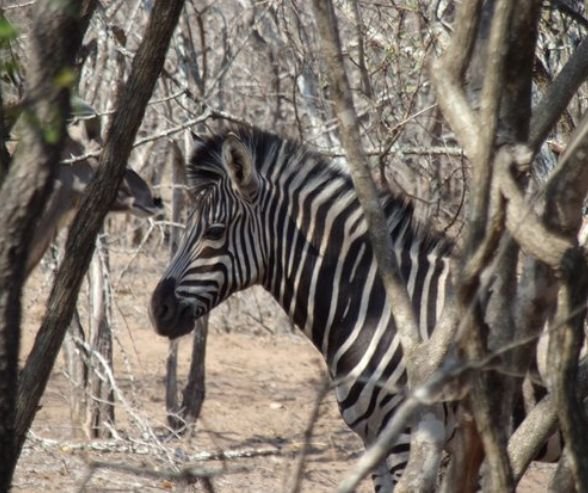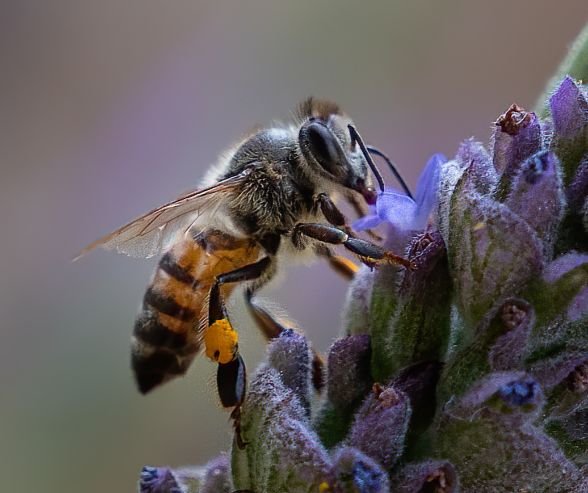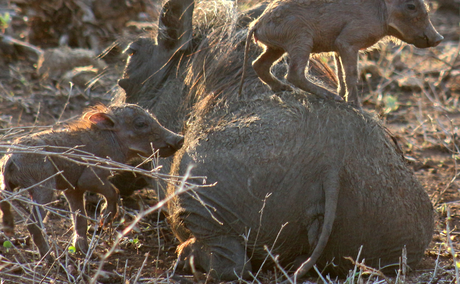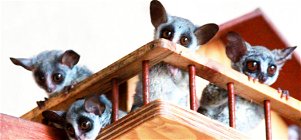Explore why African waterholes come alive at dawn and dusk. Learn about animal behaviour, best viewing times, and how to enjoy waterhole safaris around Marloth Park and Needles Lodge.
The Art of Camouflage: Nature's Masters of Disguise

Studying these camouflage artists offers more than survival tactics; it unveils the symbiotic web of life. Each evolutionary adjustment triggers cascading effects, shaping predator-prey interactions, reproductive strategies, and even ecosystem architectures. For visitors to wilderness areas like Needles Lodge, these beings underscore nature's inventive prowess and the critical need to conserve the ecosystems that nurture such diversity.
In the intricate web of the natural realm, the phenomenon of camouflage emerges as a striking illustration of evolutionary genius, serving as a pivotal survival strategy refined through the ages. "The Art of Camouflage: Nature's Masters of Disguise" offers a dive into the existence of species for whom blending in has become a refined skill, shedding light on the dynamics of their concealment and the insights they provide into nature's complexity.
Nature's Canvas: Unraveling the Science of Camouflage
At its core, camouflage embodies a fundamental goal: to vanish within one's visible surroundings. This could be to elude predators or to stealthily approach prey. The efficacy and methods of camouflage differ greatly among species, each tailored to meet the specific demands of their habitats.
Cryptic Coloration: Mastery of Concealment
Cryptic coloration stands as one of the most prevalent camouflage techniques, with animals adopting the hues and patterns of their environment. The African leopard, for instance, with its intricately spotted fur, becomes indistinguishable within the mottled shadows of dense foliage. Similarly, chameleons, celebrated for their ability to change colour, and modify their pigmentation to align with their surroundings, a stunning adaptive strategy for both predator evasion and prey ambush.

Disruptive Coloration: Concealing the Contour
Disruptive coloration aims to obscure an animal's silhouette through a series of spots, stripes, or blotches, complicating its differentiation from the backdrop. The zebra, with its striking stripes, serves as a prime example, weaving a visual conundrum that perplexes predators, particularly within a moving herd. This pattern doesn't cloak the zebra but rather complicates the predator's ability to isolate a target. That’s why they call a group of zebras a dazzle!

Mimicry: The Art of Deception
Mimicry elevates camouflage, with creatures not just merging with their surroundings but also replicating the look of other, often more menacing or distasteful, species. Take the harmless hoverfly, which adopts the distinct black and yellow bands of bees and wasps, warding off predators without resorting to stings or venom. This strategy illustrates the sophisticated evolutionary contests where mimicry is as vital for survival as physical defences.

Camouflage in Action: The Still Art
The puff adder's camouflage transcends mere appearance, blending behavior with biology in a silent symphony of survival. This serpent, with its intricately patterned skin mimicking the sun-dappled earth, practices the art of stillness to perfection. Lying motionless amidst the fallen leaves and underbrush, it becomes one with its environment, invisible to both predator and prey. This behavioral adaptation, a hallmark of the puff adder's existence, showcases the profound depth of nature's design.

Insights from Nature's Illusionists
Studying these camouflage artists offers more than survival tactics; it unveils the symbiotic web of life. Each evolutionary adjustment triggers cascading effects, shaping predator-prey interactions, reproductive strategies, and even ecosystem architectures. For visitors to wilderness areas like Needles Lodge, these beings underscore nature's inventive prowess and the critical need to conserve the ecosystems that nurture such diversity.
Further Reading
Discover the top 10 fascinating facts about the Cape buffalo—Africa’s powerful, social, and surprisingly strategic giant of the savanna. Read more now.
Discover the quirky charm and ecological role of warthogs in Kruger National Park and Marloth Park. Learn about their habits, social lives, and where to spot them near Needles Lodge.






Share This Post